Visit to the Centre Pompidou, a true Temple of Contemporary Art in Paris
Hello everyone, I hope you're doing well !
Today I wanted to share with you an architectural visit of one of my favorite museums in Paris, the famous Centre Pompidou. This national museum of contemporary art was decided by the president of the same name and opened its doors on 31 January 1977.
Its avant-garde construction for the time gave rise to a battle between some residents of the historic Marais district and the city of Paris, but almost 50 years later, I don't think there are many refractory people left !
In this article, I'll give you a tour of the building's exterior, followed by some images of some of the exhibitions I visited and two of my preferred works that are part of the permanent collection.
This is the famous building with tubes that would almost look like a factory if you didn't know that it houses one of the most important collections of modern and contemporary art. The architect is the famous Italian Renzo Piano who also designed The Shard in London, Kansai International Airport in Japan and the California Academy of Sciences in San Francisco.
With a total surface area of 103,305 m2, 45,000 m2 are accessible to the public. As far as the collections are concerned, more than 114,000 works and objects are assembled in this veritable temple of creation!
Recognizable among all, the building is composed of a frame, the metal skeleton, but which has the particularity of being partly outside, exposed to the eyes of passers-by...
Right next door, on the Place de la Fontaine Stravinsky, which is currently under construction, is the IRCAM, which is the Institute for Research and Coordination of Acoustics and Music. This research centre has been affiliated with the Centre Pompidou since its creation.
Here is the famous facade with its different levels and its tubular escalator, which is also on display for all to see and which also allows you to see your own progress when you take this sort of transparent caterpillar !
One of my favorite places is the reconstruction of the studio of the sculptor Brancusi who lived and worked in Paris in the last century. I'm unlucky because it was closed the day I visited, but I'll probably go back soon.
Anyway, if you have the opportunity to go there, it's really a superb place and quite mystical to tell the truth !
Here is a last view of this side of the building, a bit backlit, but you can clearly see the different levels of the escalator that runs the length of the museum.
Here we are on the opposite side, where there are the fewest openings, but the lifts for the museum staff and also the most tubes, like veins, arteries and all the nerves of the building.
But let's go to the entrance...
Here we are in the hall which gives access to the different exhibition spaces or to the library which the museum hosts and where many students come to work. Galleries 1 to 4 generally contain smaller exhibitions. For larger exhibitions or to see the permanent collections, you have to go upstairs !
"Elles font l'abstraction"
This exhibition took place in 2021, and I still keep archive images of my various visits. In order not to paraphrase what the exhibition is about, I'll give you the introduction to the context and the corresponding link :
The exhibition offers an original rereading of the history of abstraction from its origins to the 1980s, articulating the specific contributions of nearly one hundred and ten women artists.
The exhibition "Elles font l'abstraction" provides an opportunity to discover artists who are discoveries for both specialists and the general public. The exhibition highlights the work of many of them who suffer from a lack of visibility and recognition beyond the borders of their country. It focuses on the careers of artists who have sometimes been unfairly eclipsed by the history of art, and looks at their specific contribution to the history of abstraction.
The exhibition included classical art, paintings and sculptures, as well as dance and performance art and graphic art from all over the world.
The artists include Joan Mitchell, Eva Hesse, Anni Albers, Sophie Taeuber-Arp and Louise Bourgeois. This last work entitled "Eros" is by the artist Zilia Sánchez.
Christian Boltanski
In a completely different style, this is a monograph of the artist Christian Boltanski in 2020. Below is the introductory subtitle of the exhibition :
In some fifty works that punctuate Christian Boltanski's career, this wide-ranging survey of the work of one of the greatest creative figures of our time allows us to measure its scope and ambition, marked by its history and a half-century of meditations on the function and voice of the artist in our societies.
Thirty-five years have passed since Christian Boltanski's first exhibition at the Centre Pompidou. Conceived by Boltanski himself as a vast wander through his work, this new exhibition is less a retrospective than a series of sequences marking the stages and metamorphoses of his work.
Here, the universe is of course much darker, but at the same time, it is about the Holocaust and the death camps. Nevertheless, from an aesthetic point of view, it is a very beautiful exhibition.
Let's end this virtual visit with two of my personal favorites which can be seen in the permanent collections...
The first one "Shepherd of the clouds " is a work by Jean Arp made in 1953. I like this imposing flexibility. These heavy and so light curves at the same time.
The second by Joseph Beuys is entitled "Plight" and was made in 1985. It is a very strange and gentle space, suffocating and liberating at the same time. Below are some suggestions for exploring the work before going to see it directly...
For this work to be experienced, Beuys covers the space with rolls of felt, his favourite material linked to a personal mythology. An airman during the Second World War, Beuys crashed in the Crimea; he was saved by Tatars who wrapped him in felt blankets. The thermal and acoustic insulation of the material is represented here by a closed piano, a blackboard with a noteless musical staff and a thermometer. When the visitor enters the space, all his senses are stimulated. This ambivalent environment gives an impression of warmth and protection, but also of isolation and silence.
I hope that this extensive and deliberately incomplete visit has made you want to know more about this beautiful museum and, if you have the opportunity, to visit it soon !
Thank you for reading !
Take care of yourself :)
<3
Bonjour et bon weekend à tous !
Aujourd'hui, je voulais partager avec vous une visite architectural d'un de mes musées préférés à Paris, le célèbre Centre Pompidou. Ce musée national d'art contemporain fut décidé par le président du même nom et ouvrit ses portes le 31 janvier 1977.
Sa construction avant-gardiste pour l'époque donna lieu à une bataille entre certains riverains du quartier historique du Marais et la ville de Paris, mais presque 50 ans plus tard, je ne crois pas qu'il reste de nombreux réfractaires !
Dans cet article, je vous propose un tour de l'extérieur du bâtiment qui sera suivi de quelques images de certaines expositions que j'ai pu aller visiter et des deux de mes oeuvres préférées qui font parties de la collection permanente.
Voilà le fameux bâtiment aux tubes qui ressemblerait presque à une usine si on ne savait pas qu'il abrite une des plus importante collection d'art moderne et contemporain. L'architecte est le célèbre italien Renzo Piano qui a aussi conçu, The Shard à Londres, l'aéroport international du Kansai au Japon et l'académie des sciences de Californie à San Fransisco.
D'une surface totale de 103 305 m2, 45 000 m2 sont accessibles au public. En ce qui concerne les collections, c'est plus de 114.000 oeuvres et objets qui sont rassemblés dans ce véritable temple de la création !
Reconnaissable entre tous, le bâtiment est composé d'une armature, le squelette métallique, mais qui a la particularité d'être en partie à l'extérieur, exposé au regards des passants...
Juste à côté, sur la place de la Fontaine Stravinsky, qui est actuellement en travaux, on trouve l'IRCAM, qui est L’Institut de recherche et coordination acoustique/musique. Ce centre de recherches est depuis sa création affilié au Centre Pompidou.
Voici la célèbre facade avec ses différents niveaux et son escalier mécanique tubulaire, lui aussi exposé à la vue de tous et qui permet de la même manière de voir sa propre progression lorsqu'on emprunte cette sorte de chenille transparente !
Un de mes endroits préféré est la reconstitution de l'atelier du sculpteur Brancusi qui vécu et travailla à Paris au siècle dernier. Je joue de malchance car celui-ci est fermé le jour de ma visite, mais ce n'est que partie remise et j'y retournerai sans doute bientôt.
Quoiqu'il en soit, si vous avez l'occasion de vous y rendre c'est vraiment un endroit superbe et assez mystique à dire vrai..!
Voilà une dernière vue de cette face-là du bâtiment, un peu en contre-jour, mais on voit bien les différents degrés de l'escalier mécanique qui longe toute la longueur du musée.
Nous voilà du côté opposé, celui où l'on trouve le moins d'ouvertures, mais les ascenseurs pour le personnel du musée et aussi la plus grande quantité de tubes, comme les veines, les artères et tous les nerfs du bâtiment.
Mais dirigeons nous vers l'entrée...
Nous voilà dans le hall qui permet d'accéder aux différents lieux d'exposition ou à la bibliothèque que le musée accueille en son sein et dans laquelle de nombreux étudiants viennent travailler. Dans les galeries 1 à 4 on trouve généralement de plus petites expositions. Pour celles plus conséquentes ou pour voir les collections permanentes, il faudra monter dans les étages !
Elles font l'abstraction
Cette exposition a eu lieu en 2021, mais je garde toujours des images d'archives de mes différentes visites. Pour ne pas paraphraser le propos de l'exposition, je vous mets l'introduction au contexte ainsi que le lien correspondant :
"L’exposition propose une relecture inédite de l’histoire de l’abstraction depuis ses origines jusqu’aux années 1980, articulant les apports spécifiques de près de cent dix artistes femmes.
« Elles font l’abstraction » donne l’occasion de découvrir des artistes qui constituent des découvertes tant pour les spécialistes que pour le grand public. L'exposition valorise le travail de nombre d’entre elles souffrant d’un manque de visibilité et de reconnaissance au-delà des frontières de leur pays. Elle se concentre sur les parcours d’artistes, parfois injustement éclipsées de l’histoire de l’art, en revenant sur leur apport spécifique à l’histoire de l’abstraction."
Dans cette exposition, on trouvait autant des arts plus classique, peinture, sculptures, mais aussi des représentations de danses et de performances ainsi que des arts graphiques et ce, du monde entier.
Parmi les artistes, on retrouve Joan Mitchell, Eva Hesse, Anni Albers, Sophie Taeuber-Arp et Louise Bourgeois. Cette dernière oeuvre intitulée "Eros" est de l'artiste Zilia Sánchez.
Christian Boltanski
Dans un tout autre style, ici il s'agit d'une monographie de l'artiste Christian Boltanski en 2020. Ci-dessous, le sous-titre introductif de l'exposition :
"En quelque cinquante œuvres rythmant le parcours de Christian Boltanski, cette ample traversée de l’œuvre d’une des plus grandes figures de la création de notre temps permet d’en mesurer l’ampleur et l’ambition marquées par son histoire et un demi-siècle de méditations sur la fonction et la parole de l’artiste dans nos sociétés."
"Trente-cinq années se sont écoulées depuis la première exposition de Christian Boltanski au Centre Pompidou. Conçue par Boltanski lui-même comme une vaste déambulation au cœur de son œuvre, cette nouvelle exposition se veut moins une rétrospective qu’une suite de séquences marquant les étapes et les métamorphoses de son propos."
Ici, l'univers est bien entendu beaucoup plus sombre, mais en même temps, cela parle de l'Holocauste et des camps de la mort. Quoiqu'il en soit, cela reste du point de vue esthétique un très belle exposition.
Terminons cette visite virtuelle par deux de mes oeuvres favorites et qui sont visibles dans les collections permanentes...
La première "Berger des nuages" est une oeuvre de Jean Arp réalisée en 1953. J'aime cette souplesse imposante. Ces rondeurs lourdes et si légères à la fois.
La seconde de Joseph Beuys est intitulée "Plight" et a été réalisée en 1985. C'est un espace très étrange et doux à la fois, étouffant et libérateur. Ci-dessous, voilà quelques pistes pour explorer l'oeuvre avant d'aller la voir directement sur place...
Pour cette œuvre à vivre, Beuys recouvre l'espace avec des rouleaux de feutre, son matériau de prédilection lié à une mythologie personnelle. Aviateur pendant la Seconde Guerre mondiale, Beuys s'écrase en Crimée; il aurait été sauvé par des Tatars qui l'enroulèrent dans des couvertures de feutre. L'isolation thermique et acoustique propre au matériau est ici signifiée par un piano fermé, un tableau noir avec une portée musicale sans note et un thermomètre. Lorsque le visiteur pénètre dans l'espace, tous ses sens sont sollicités. Cet environnement ambivalent donne une impression de chaleur et de protection, mais aussi d'isolement et de silence.
J'espère que cette visite fournie et volontairement incomplète vous aura donné envie d'en savoir plus sur ce beau musée et si vous en avez l'occasion, de vous y rendre prochainement !
Merci pour votre lecture !
Prenez soin de vous :)
<3

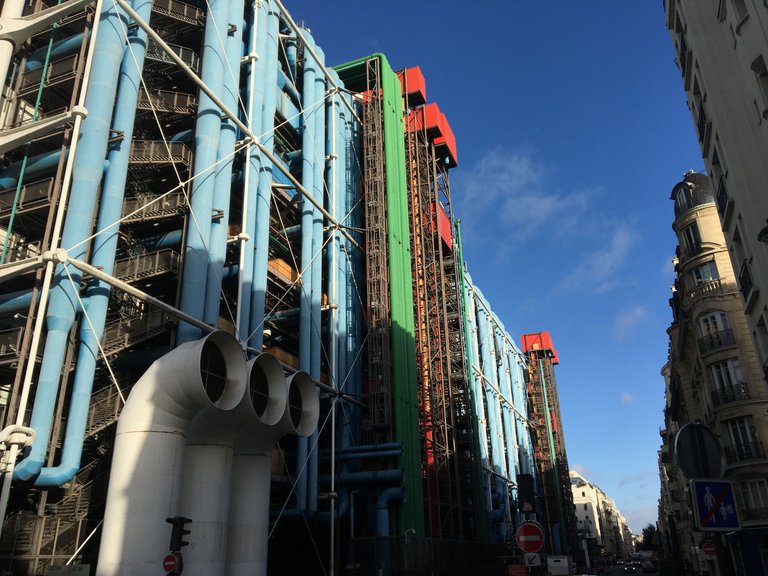
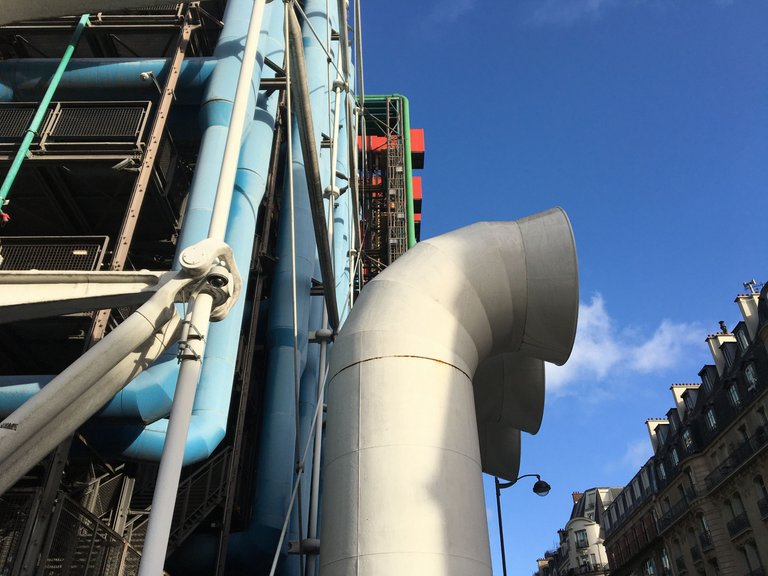
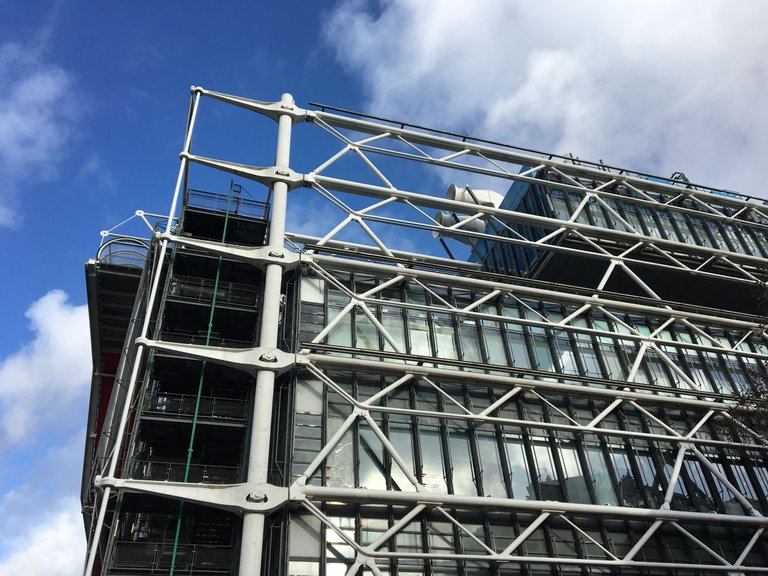
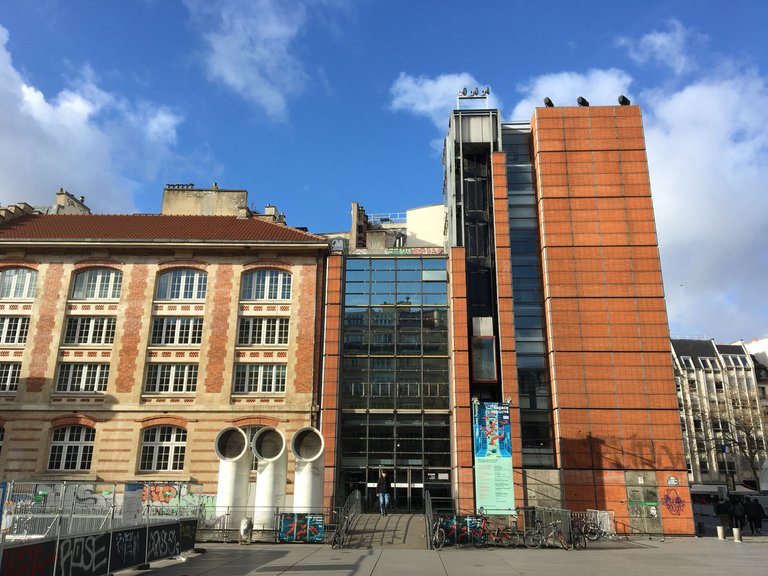
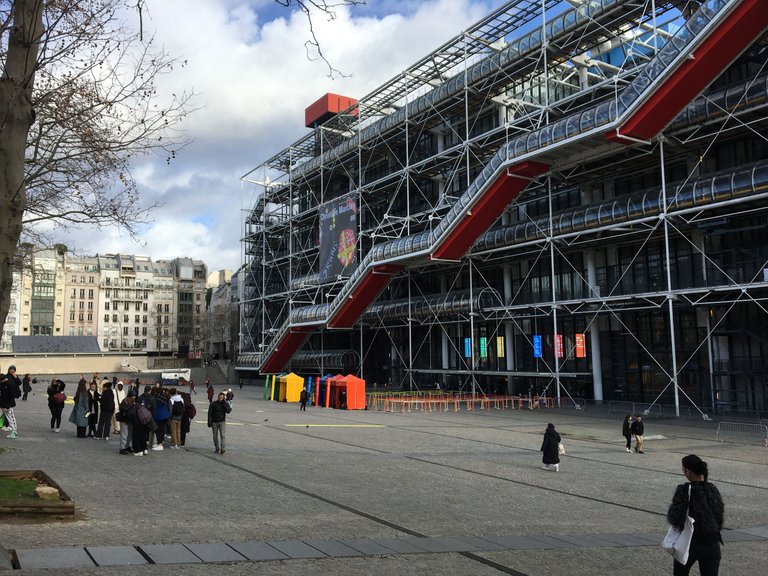
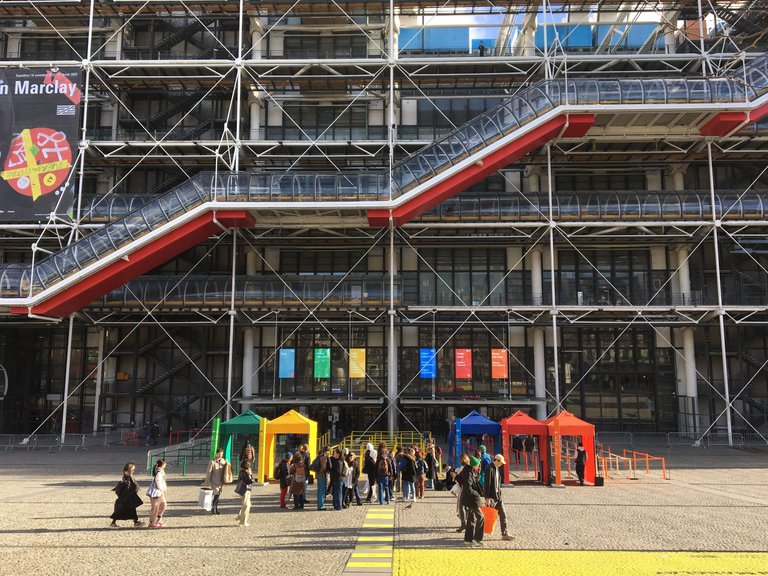
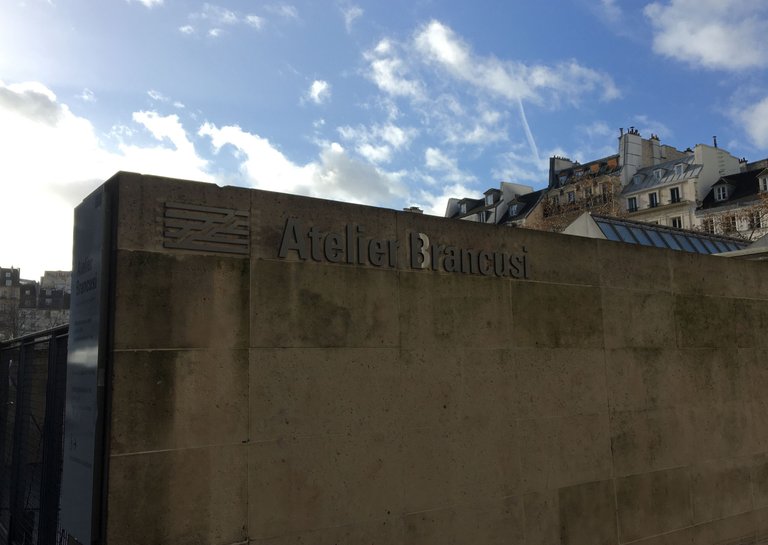
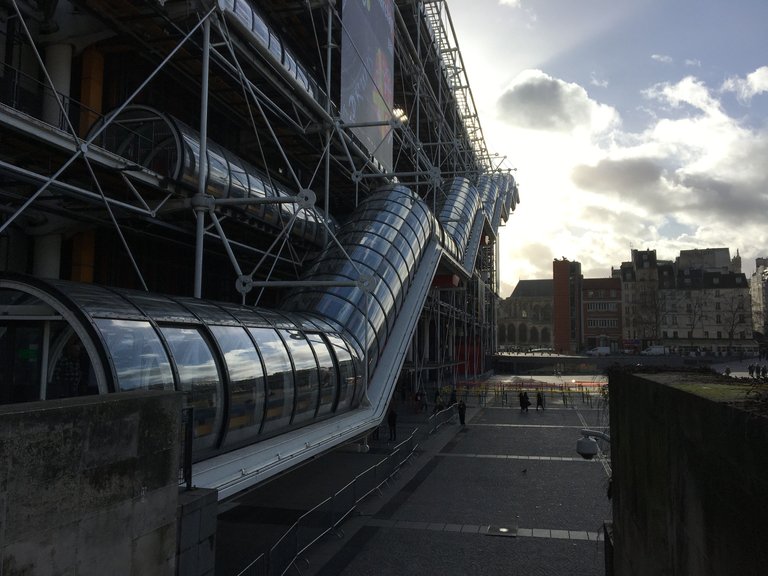
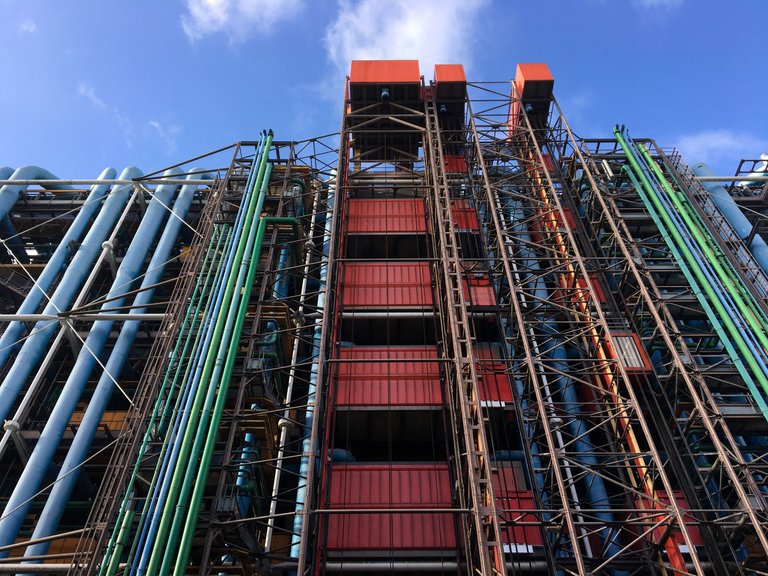

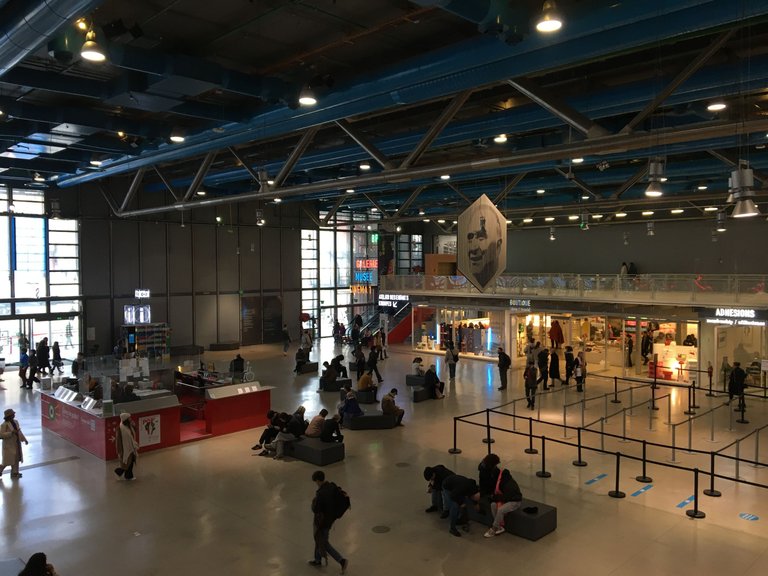
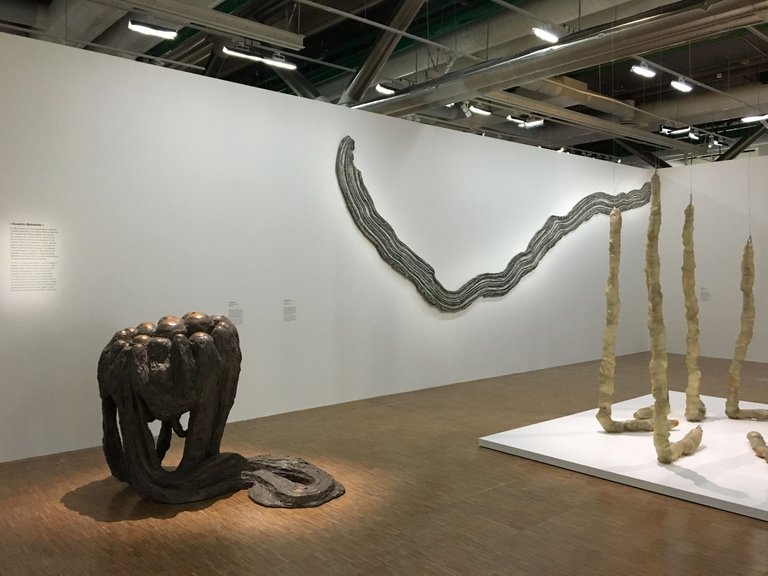
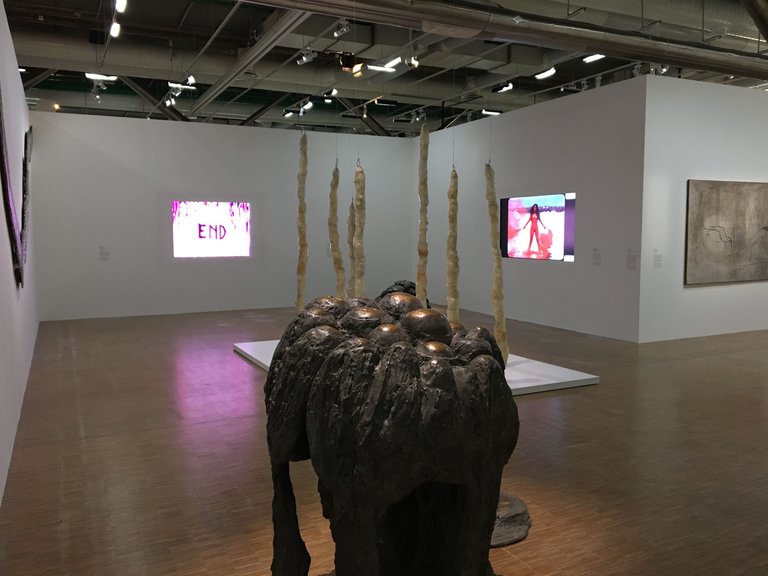
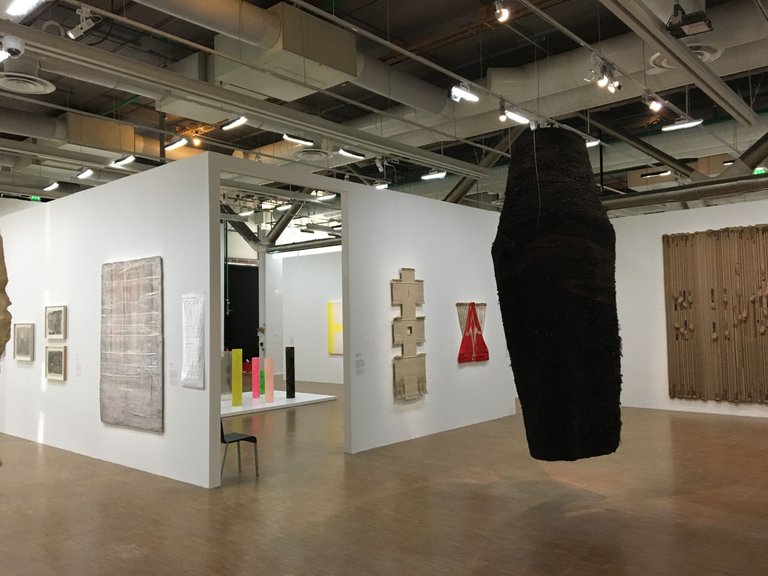

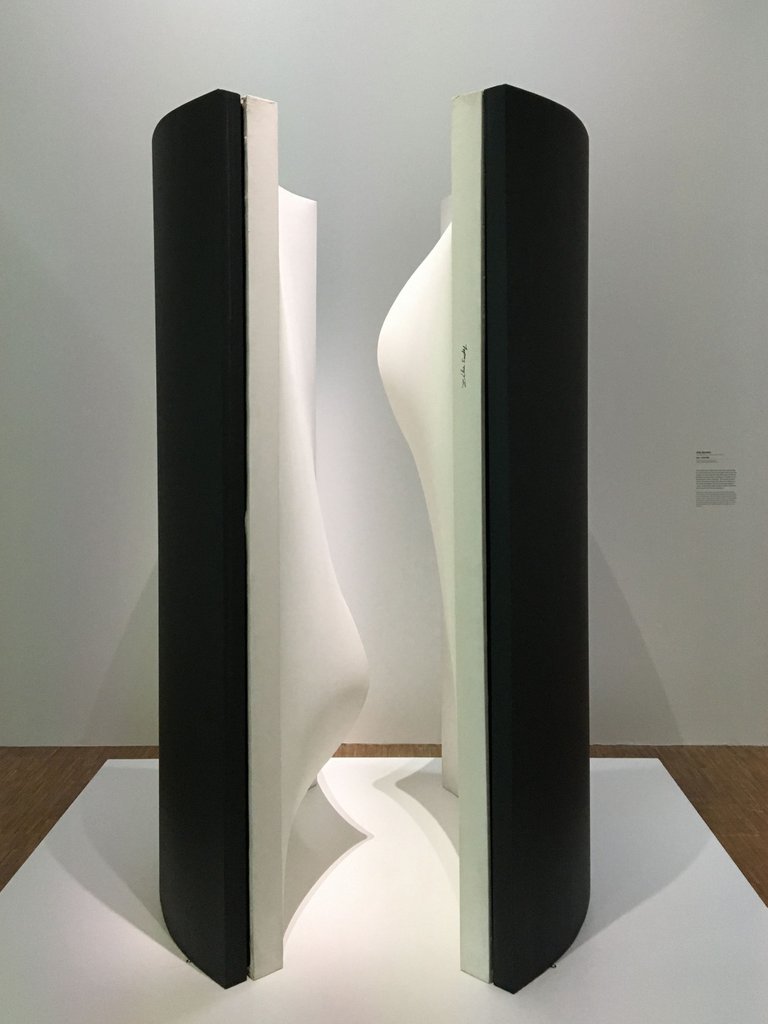

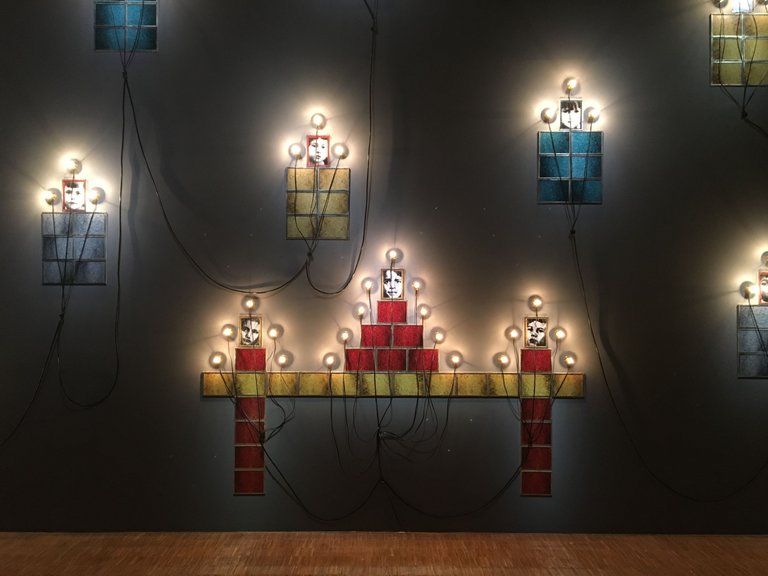
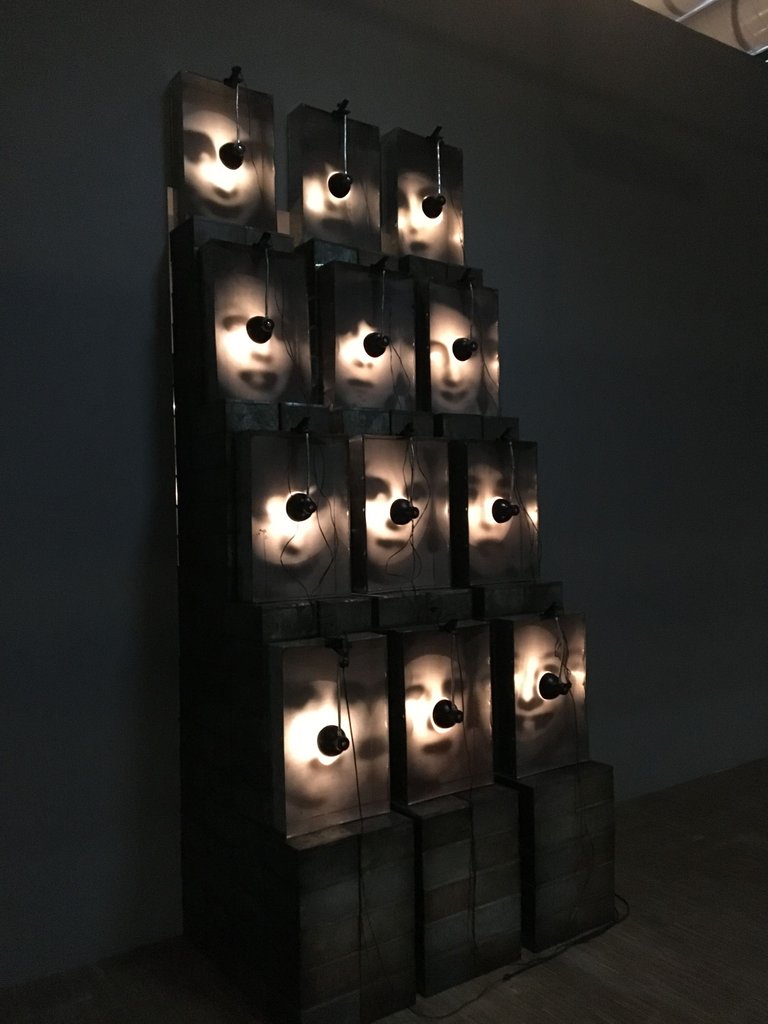
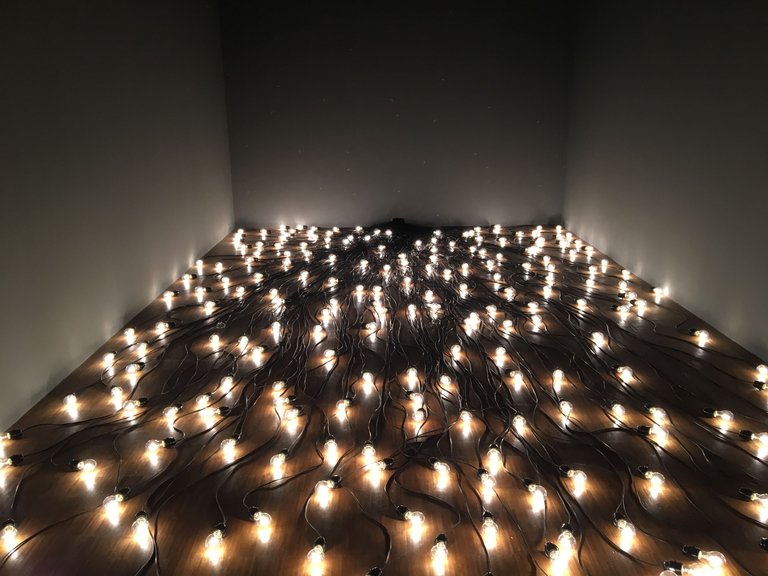
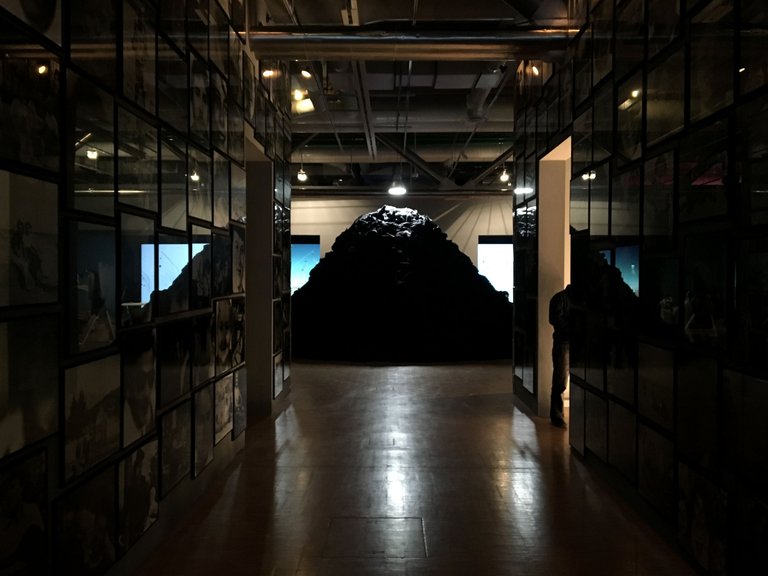

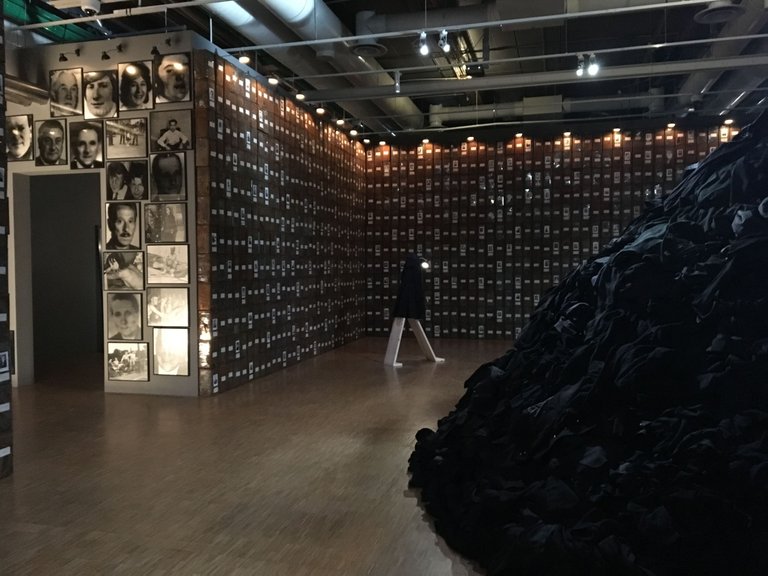
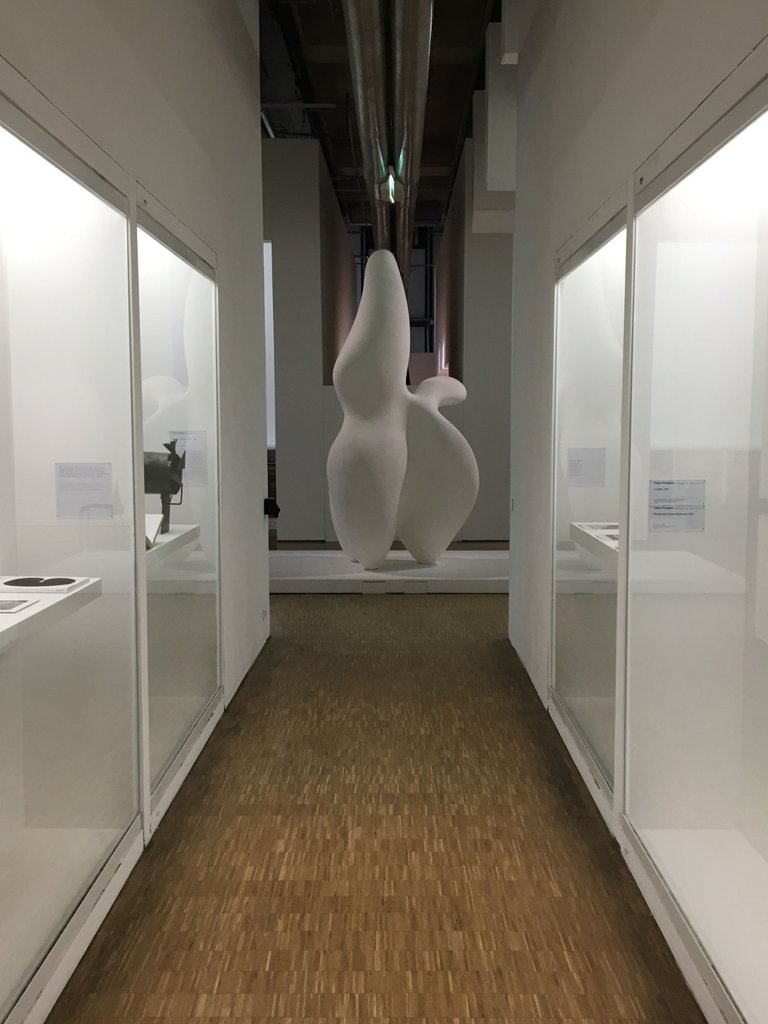
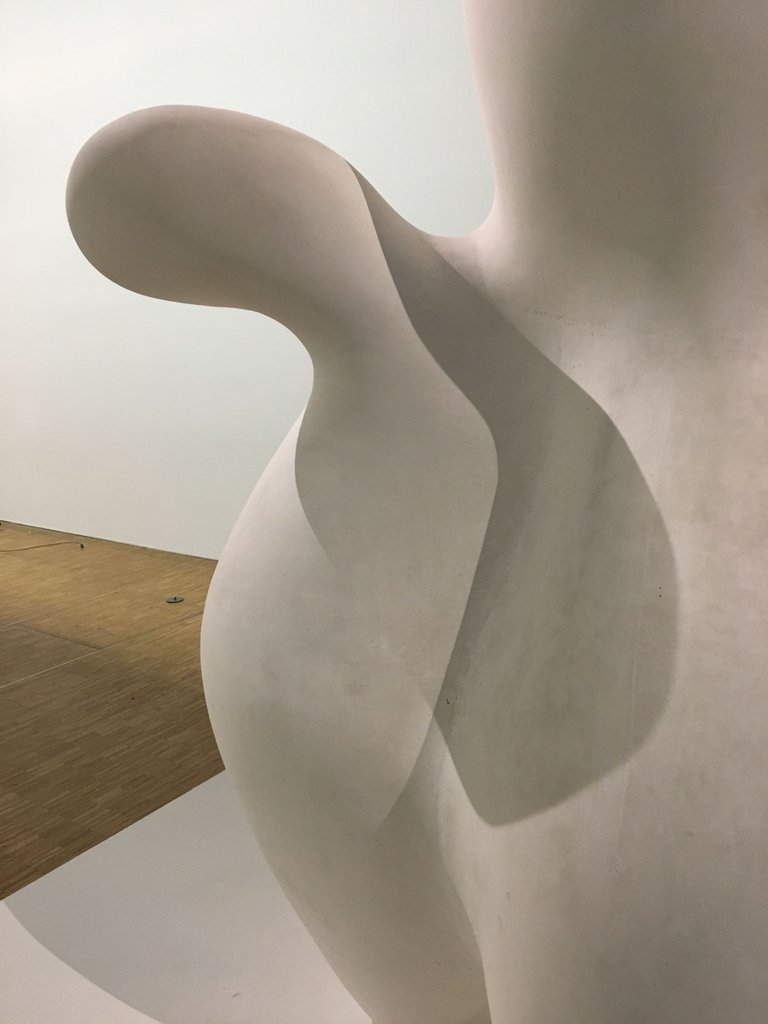
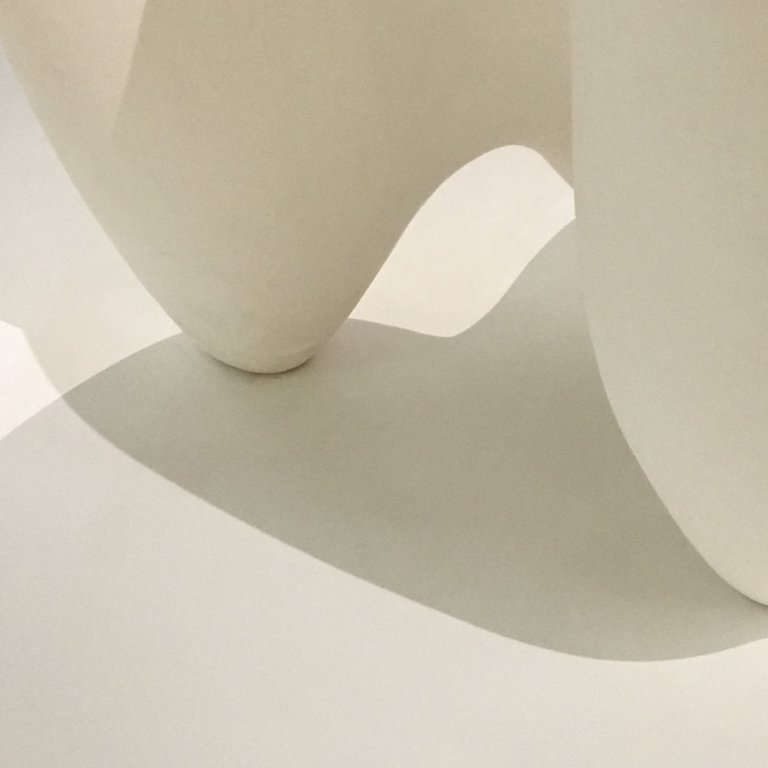
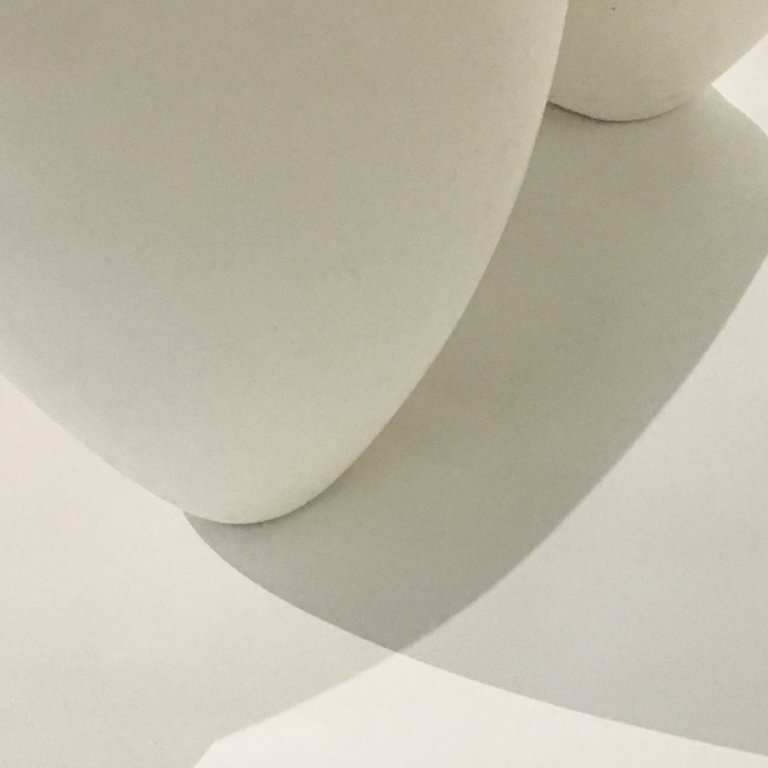
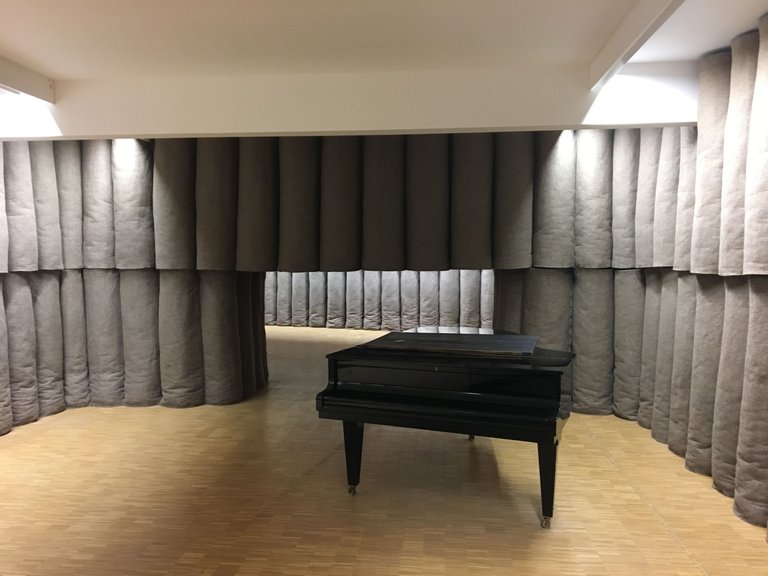
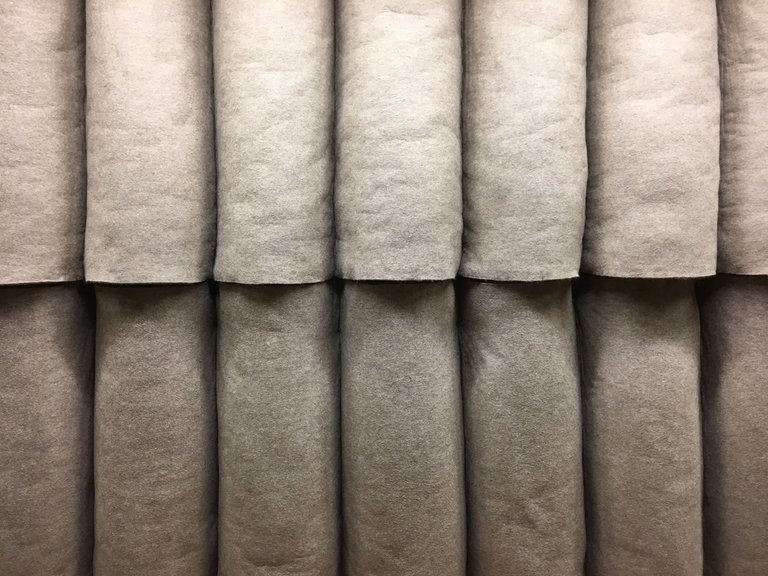
Congratulations, your post has been added to Pinmapple! 🎉🥳🍍
Did you know you have your own profile map?
And every post has their own map too!
Want to have your post on the map too?
This museum is huge! and you're right the pipes and tubes made it look like a factory outside. It's my first time seeing those kinds of masterpieces. They are interestingly beautiful, especially the one with many lights though it represents a sad history.
It's definitely a massive building, art factory !
Yeah, as (almost) everything can be made beautiful and poetic, despite the facts and events at the root...
Thanks you for visiting, I hope you're enjoying your weekend 🌟
https://twitter.com/1475819111271870469/status/1614292308723396608
https://twitter.com/1608815227323154432/status/1614624927738470401
The rewards earned on this comment will go directly to the people( @ladytitan, @hive-103505 ) sharing the post on Twitter as long as they are registered with @poshtoken. Sign up at https://hiveposh.com.
I know about the famous Pompidou but have never been before as I'm not really an art person. It sounds like a massive place, but less than half of it is open the public, I image most of that space is where they store all the art nnd you have been privileged to see that part? 😃
If you have the occasion to come in Paris, it's a nice place to hang out an afternoon... even for an non-art person :) I hope you already enjoyed the virtual visit :)
There's indeed a big part which is use as storage, but I think the library is counted into that space as it's not the exhibitions spaces. Yeah, I sometimes work in those storage/technical parts, really impressive ! Always exciting and curious to see the things you don't see as a visitor !
Just a little technical question about how Pinmapple works, I always tend to post my articles in the evening, but it's better to do it in the morning (for people who live in Europe), right ? I mean in relation to the Travel Digest and the time it takes to read and view the articles for you which I imagine is considerable...
Have a pleasant weekend ✌️
The team are scattered around the world, Germany, UK, Philippines and Panama. We work to our own times but we try to issue the Travel Digest roughly around the same time each day so we can always curate everything within 24 hours. But there's still quite a big gap for the issue time which ranges from late afternoon/early morning Europe time to sometimes very early morning Europe time the next day, for example Monday morning for Sunday TD. Hope that helps
Thanks you for your detailed answer ! I get it now and that completely responds to my questionnements :)
Have a nice week ahead ✌️
Hiya, @LivingUKTaiwan here, just swinging by to let you know that this post made it into our Honorable Mentions in Daily Travel Digest #1760.
Your post has been manually curated by the @pinmapple team. If you like what we're doing, please drop by to check out all the rest of today's great posts and consider supporting other authors like yourself and us so we can keep the project going!
Become part of our travel community:
Thanks you 😊 !
Hi @anttn, your post has been upvoted by @bdcommunity courtesy of @rehan12!
Support us by voting as a Hive Witness and/or by delegating HIVE POWER.
JOIN US ON
Thanks you for your support 😊 !